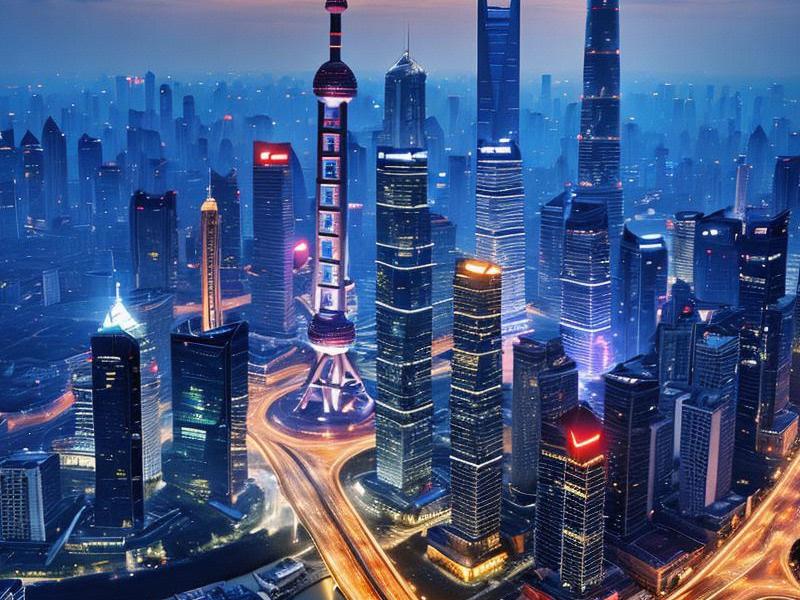This article delves into the multifaceted aspects of Shanghai, exploring its role as a global economic hub, a cultural melting pot, and a city that continues to innovate and evolve in the 21st century.

Shanghai, known as "The Paris of the East," is a vibrant metropolis that has been at the forefront of China's economic and cultural transformation. As the largest city in China and one of the world's most populous urban centers, Shanghai is a city of contrasts where ancient traditions meet modern innovation.
The city's history dates back to the Song Dynasty, but it was during the 19th and early 20th centuries that Shanghai began to emerge as a global financial center. The establishment of the International Settlement and the French Concession brought a mix of Western and Chinese influences, creating a unique urban landscape that still defines the city today.
In recent decades, Shanghai has undergone rapid urban development, transforming from a manufacturing hub into a global center for finance, trade, and technology. The Pudong area, once a rural area on the eastern side of the Huangpu River, has been transformed into a symbol of modernity with its skyline dominated by the iconic Oriental Pearl Tower, the Jin Mao Tower, and the Shanghai Tower, the tallest building in China.
The city's economic success is reflected in its bustling financial district, the Lujiazui Financial Zone, which houses some of the world's largest banks and multinational corporations. Shanghai's stock exchange is one of the busiest in Asia, and the city is home to the Chinese yuan's offshore trading hub. The development of free trade zones and the implementation of the China (Shanghai) Pilot Free Trade Zone have further solidified Shanghai's position as a key player in global trade.
爱上海最新论坛 However, Shanghai's appeal extends far beyond its economic prowess. The city is a cultural melting pot, with a rich history of art, literature, and cuisine. The Bund, a historic waterfront area, offers stunning views of the Pudong skyline and is a popular spot for both locals and tourists. The Yu Garden, a classical Chinese garden, provides a glimpse into the city's traditional past.
Shanghai's cultural scene is thriving, with numerous museums, galleries, and theaters showcasing both traditional and contemporary art. The Shanghai Museum is renowned for its extensive collection of Chinese art, while the Power Station of Art, a former power plant turned contemporary art museum, has become a cultural landmark. The city also hosts major international events, such as the Shanghai International Film Festival and the Shanghai Fashion Week, attracting artists, designers, and audiences from around the world.
The culinary scene in Shanghai is another highlight, with its signature dishes like Xiaolongbao (soup dumplings), Shengjianbao (pan-fried dumplings), and the famous Nanxiang Mantou (steamed bun). The city's night markets and bustling food streets offer a taste of local flavors, while high-end restaurants provide a platform for innovative Chinese cuisine.
Shanghai's commitment to innovation is evident in its efforts to become a smart city. The city has invested heavily in digital infrastructure, smart transportation systems, and e-governance initiatives. The launch of the world's first commercial magnetic levitation (maglev) train, connecting Pudong International Airport to the city center, is a testament to Shanghai's forward-thinking approach to urban development.
上海龙凤419自荐
The city's education sector is also a key driver of innovation, with prestigious universities like Fudan University and Tongji University attracting students and researchers from around the globe. ShanghaiTech University, a collaboration between the Chinese Academy of Sciences and the city government, is at the forefront of research in artificial intelligence, biotechnology, and other cutting-edge fields.
Despite its rapid development, Shanghai remains committed to sustainability and environmental protection. The city has implemented various green initiatives, such as the construction of eco-friendly buildings, the promotion of public transportation, and the development of urban green spaces. The Shanghai World Expo in 2010, which focused on sustainable urban living, left a lasting legacy of environmental awareness and innovation.
Shanghai's international influence is also evident in its role as a hub for global diplomacy and trade. The city hosts numerous international organizations and summits, including the G20 Summit and the Belt and Road Forum. Its well-connected airport and seaport make it a key gateway for global trade and travel.
爱上海419论坛 The city's residents enjoy a high quality of life, with access to world-class healthcare, education, and cultural amenities. Shanghai's public transportation system, which includes a comprehensive metro network, buses, and ferries, is efficient and convenient, making it easy to navigate the city.
However, like any major urban center, Shanghai faces challenges such as traffic congestion, air pollution, and housing affordability. The city government has been proactive in addressing these issues through policy changes, infrastructure improvements, and public awareness campaigns.
Shanghai's future looks promising as it continues to evolve into a global leader in innovation, culture, and sustainability. The city's vision for the future includes further urban development, technological advancements, and a commitment to creating a livable and sustainable environment for its residents.
In conclusion, Shanghai is a dynamic metropolis that embodies the spirit of China's modernization and globalization. Its blend of ancient traditions and modern innovation, economic prowess and cultural vibrancy, and commitment to sustainability and quality of life make it a unique and fascinating city. As Shanghai continues to grow and adapt, it remains a beacon of progress and a symbol of China's aspirations on the global stage.